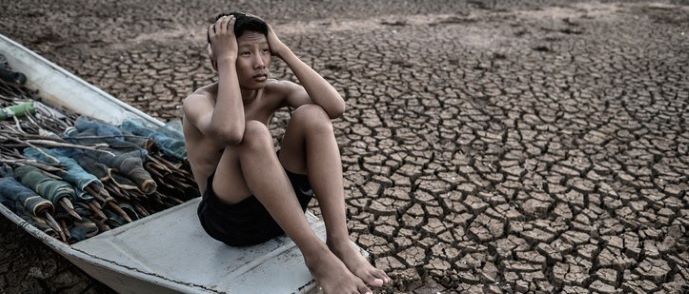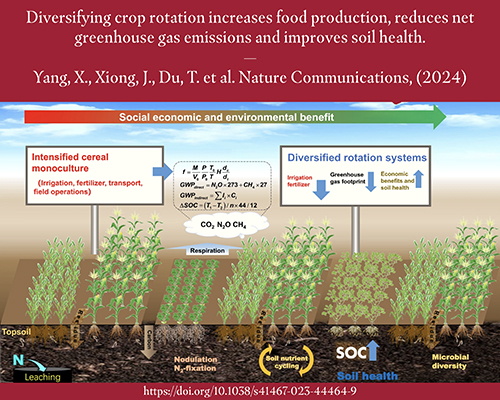Impact of Human-Caused Global Warming on Early Summer Heatwave in Europe
Overview of Heatwave Intensification and Mortality
An international team of scientists reported that human-caused global warming increased peak temperatures during an early summer heatwave across Europe by up to 7 degrees Fahrenheit. This warming tripled the number of expected heat-related deaths in 12 major European cities, including Paris, London, Milan, Madrid, Barcelona, Athens, Rome, Lisbon, Budapest, Zagreb, Frankfurt, and Sassari.
Of the estimated 2,300 heat-related deaths during the heatwave, approximately 1,500 were attributed to the intensification of planetary heating primarily caused by fossil fuel combustion.
Vulnerable Populations and Health Impacts
- People aged 65 and over accounted for 88% of the deaths linked to climate change.
- Individuals with underlying health conditions are at increased risk of premature death during heatwaves.
Scientific Analysis and Methodology
- Historical weather data was analyzed to determine that the heatwave was 2 to 7 degrees Fahrenheit hotter than it would have been without human-induced warming.
- Published research on heat-related mortality was used to estimate total deaths during the 10-day period.
- Comparison with a hypothetical unaltered climate attributed 65% of heat-related deaths to human-caused warming.
Urgency and Real-Time Research During the Heatwave
Researchers conducted their analysis during the heatwave, emphasizing the urgency of understanding the immediate effects of extreme heat on public health. The study highlights the need for improved public awareness and media coverage that accurately reflects the dangers of heatwaves rather than portraying them as leisure events.
Preparation and Public Health Response
- Experts stress the importance of enhanced preparation for the health impacts of extreme heat as global warming increases heatwave frequency.
- Official heat death estimates may be underreported due to conservative attribution practices by medical and public health authorities.
Future Projections and Climate Change Mitigation
Increasing Frequency of Heatwaves
Scientific studies confirm the rising frequency and intensity of European heatwaves, with the continent warming twice as fast as the global average since the 1980s. Climate models project that without significant reductions in greenhouse gas emissions, the number of heatwave days in cities such as Berlin, Paris, and Madrid could double or triple by the end of the century.
Impact of Meeting Global Climate Targets
- If the Paris Agreement target of limiting global temperature rise to approximately 2.7 degrees Fahrenheit above pre-industrial levels is met, the annual number of heatwave days would remain stable.
- Failure to meet these targets will lead to substantially increased heat-related health risks.
Global Implications
Changes in atmospheric planetary wave patterns linked to human-caused warming contribute to persistent summer extremes worldwide, including stable heat domes and floods. These phenomena exacerbate the risks associated with heatwaves beyond Europe.
Significance for Sustainable Development Goals (SDGs)
SDG 3: Good Health and Well-being
- Addressing heat-related mortality aligns with ensuring healthy lives and promoting well-being for all ages.
- Improved public health preparedness and accurate mortality reporting are critical to reducing heatwave-related deaths.
SDG 13: Climate Action
- Mitigating greenhouse gas emissions is essential to limit global warming and reduce the frequency and severity of heatwaves.
- Scientific attribution studies provide evidence to support policy decisions aimed at climate change mitigation.
SDG 11: Sustainable Cities and Communities
- Urban areas must enhance resilience to climate-induced heatwaves through improved infrastructure and emergency response systems.
- Heatwave warnings and public education campaigns contribute to safer, more sustainable communities.
Conclusion
The recent European heatwave exemplifies the severe human health impacts of climate change, emphasizing the urgent need for global climate action and public health preparedness. Achieving the Sustainable Development Goals, particularly those related to health, climate action, and sustainable cities, requires coordinated efforts to reduce emissions and protect vulnerable populations from extreme heat events.
1. Sustainable Development Goals (SDGs) Addressed or Connected
- SDG 3: Good Health and Well-being
- The article discusses heat-related deaths, especially among vulnerable populations such as the elderly and those with underlying health conditions, linking climate change to public health impacts.
- SDG 13: Climate Action
- The article focuses on human-caused global warming, its role in intensifying heatwaves, and the urgent need for reducing greenhouse gas emissions.
- SDG 11: Sustainable Cities and Communities
- Heatwaves affecting multiple European cities and the need for better heatwave warnings and public health preparedness are highlighted.
2. Specific Targets Under Those SDGs Identified
- SDG 3: Good Health and Well-being
- Target 3.9: Reduce the number of deaths and illnesses from hazardous chemicals and air, water and soil pollution and contamination.
- Target 3.d: Strengthen the capacity of all countries for early warning, risk reduction and management of national and global health risks.
- SDG 13: Climate Action
- Target 13.1: Strengthen resilience and adaptive capacity to climate-related hazards and natural disasters in all countries.
- Target 13.2: Integrate climate change measures into national policies, strategies and planning.
- Target 13.3: Improve education, awareness-raising and human and institutional capacity on climate change mitigation, adaptation, impact reduction and early warning.
- SDG 11: Sustainable Cities and Communities
- Target 11.5: Reduce the number of deaths and the number of people affected by disasters, including water-related disasters, with a focus on protecting the poor and vulnerable.
- Target 11.b: Increase the number of cities adopting and implementing integrated policies and plans towards inclusion, resource efficiency, mitigation and adaptation to climate change.
3. Indicators Mentioned or Implied to Measure Progress
- Heat-related mortality rates
- The article quantifies heat-related deaths (e.g., 2,300 deaths during the heatwave with 1,500 attributed to human-caused warming), which can be used as an indicator to measure health impacts of climate change and effectiveness of adaptation measures.
- Frequency and intensity of heatwaves
- Projected doubling or tripling of heatwave days in cities like Berlin and Paris by 2100 is an indicator of climate change impacts and progress on mitigation.
- Temperature anomalies relative to pre-industrial levels
- Measurements of temperature increases (e.g., 2 to 7 degrees Fahrenheit above pre-industrial averages) serve as indicators for tracking climate change.
- Heatwave early warning systems and public health preparedness
- Implied through mentions of improved heatwave warnings and the need for better public health responses, indicators could include the existence and effectiveness of such systems.
4. Table of SDGs, Targets, and Indicators
| SDGs | Targets | Indicators |
|---|---|---|
| SDG 3: Good Health and Well-being |
|
|
| SDG 13: Climate Action |
|
|
| SDG 11: Sustainable Cities and Communities |
|
|
Source: insideclimatenews.org







